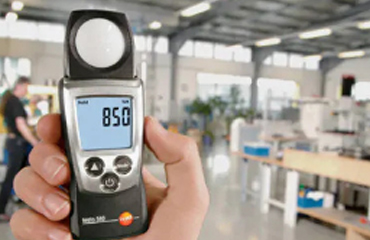Light Intensity Test
Light Intensity Test measures the amount of light in a specific area, ensuring compliance with standards. It verifies adequate lighting for tasks, safety, and product quality. Critical in industries like pharmaceuticals, laboratories, and manufacturing. Ensures a suitable environment for personnel and products.

Purpose
The purpose of a Light Intensity Test is to:
- Ensure adequate lighting: Verify that the lighting levels meet the required standards for tasks, safety, and comfort.
- Identify areas for improvement: Detect areas where lighting levels may be too high or too low, and make adjustments accordingly.
- Comply with regulations: Meet regulatory requirements for lighting levels in various industries, such as healthcare, education, or manufacturing.
How it's done
- Lux meter measurement: A lux meter is used to measure the light intensity in lux (lx) or foot-candles (fc).
- Measurement locations: Measurements are taken at specific locations and heights to ensure accurate representation of the lighting conditions.
- Data analysis: The measured data is analyzed to determine if the lighting levels meet the required standards.
Benefits:
- Improved safety: Adequate lighting levels can reduce eye strain, improve visibility, and prevent accidents.
- Increased productivity: Proper lighting levels can enhance task performance, reduce errors, and improve overall productivity.
- Energy efficiency: Identifying areas for improvement can lead to energy-saving opportunities.
Applications:
Light Intensity Tests are commonly used in:
- Workplaces: Offices, manufacturing facilities, and other work environments where lighting can impact productivity and safety.
- Educational institutions: Classrooms, libraries, and other learning environments where lighting can affect student performance.
- Healthcare facilities: Hospitals, clinics, and other healthcare environments where lighting can impact patient care and safety.
Optimize lighting conditions – Measure intensity now!
